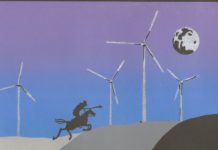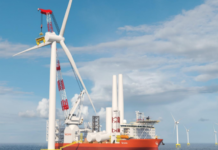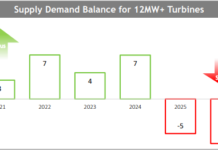by Debra Fiakas CFA
This week Pattern Energy Group’s (PEGI: Nasdaq), the independent wind power generator, is scheduled to report sales and earnings for the quarter ending September 2015. The company has cultivated a strong following among analysts for a company its size. Nine estimate contributions have gone into a consensus estimate of $87.2 million in sales for the quarter, resulting in a net loss of a penny per share. If achieved the sales hurdle would represent 22% growth over the same quarter last year. A penny loss may not seem impressive, but it is substantially better than the $0.15 loss the company posted last year for the third quarter. Indeed, the consensus estimate for the next quarter and next year suggests the company is poised to reach profitability for 2015 and then take off on a run into the next year to potentially reach 40% sales growth and tripling earnings.
Pattern Energy operates fourteen wind power facilities across the U.S., Canada, Chile and Puerto Rico. Another two facilities are under construction. With exotic names like Logan’s Gap Wind in Comanche County, Texas and Lost Creek Wind in DeKalb County, Missouri, the wind power sites have a total capacity to generate 2,282 megawatts.
Far away from the windy stretches where its wind turbines spin out electricity, Pattern Energy’s management team is installed in offices at San Francisco’s historic Embarcadero. Most members hail from Babcock & Brown, the Australia-based investment and advisory firm that went bust during the financial crisis in 2009. The post mortem for Babcock & Brown suggests it was poorly run, with little regard for prudent leverage or risk management practices. Reportedly, the Wind Group at Babcock & Brown was central to the problems, paying out substantially more dividends than was earned as operating cash flow. While normally prohibited, such excessive payments were made by setting up the Wind Group in an off-shore ownership structure. The ruse allowed Babcock & Brown to portray the company as highly profitable so the company could borrow more from banks as well as pay out management fees and bonuses to senior executives.
According to its financial reports, Pattern Energy recorded $266.6 million in total energy sales in the twelve months ending June 2015, resulting in a net loss of $33.2 million. However, operating cash flow in the period was positive $98.2 million and the company closed out June with $82.9 million in cash on the balance sheet. Cash generation is all important, as power generation is a capital hungry business. Capital investment has averaged over $290 million per year over the past three years. Dividends are also a drain on cash. The company is slated to pay out $1.45 per share in dividends over the next year, requiring at least $108 million in cash to cover checks to shareholders.
To keep things going Pattern Energy has put on some leverage, bringing total long-term debt to $2.0 billion at the end of June 2015. The company has also sold common stock, raising approximately $867 million over the last three and a half years.
Investors have been squirming under the added risk associated with higher leverage as well as the specter of losses during the last year. PEGI began trading downward in mid-July 2015 when the rest of the U.S. equity market took a nose dive. With a beta of 1.04 we would expect a decline commensurate with the broader market. However, PESI has not recovered with the rest of the market, leaving the stock price closer to its 52-week low price than it is to the high price.
For investors who are content with management’s performance and trust financial strength of the company, the depressed stock price is appealing. The current dividend yield is 6.8%, a yield that could deliver a pleasant breeze to investors’ portfolios.
Debra Fiakas is the Managing Director of Crystal Equity Research, an alternative research resource on small capitalization companies in selected industries.
Neither the author of the Small Cap Strategist web log, Crystal Equity Research nor its affiliates have a beneficial interest in the companies mentioned herein.








